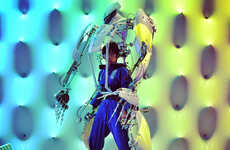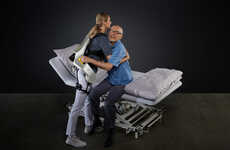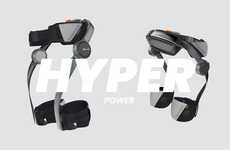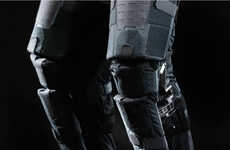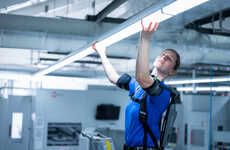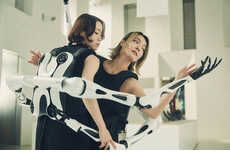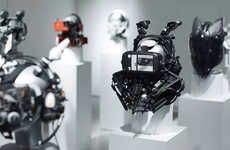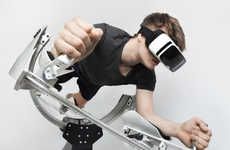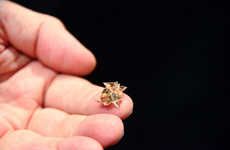These Futuristic Suits Help Japanese Airport Workers Lift Heavy Loads
Katherine Pendrill — July 8, 2015 — Tech
References: cyberdyne.jp & digitaltrends
'Cyberdyne' has just unveiled the new design for its robotic exoskeleton suits called 'HAL.' The futuristic suits may look like a strange pair of cyborg limbs, but they actually serve a very practical purpose.
The exoskeleton suits work by feeding off of a user's brain signals. When an individual wants to make a move, their brain sends a signal to the muscles that travel across the surface of a person's skin. HAL reads and interprets these bio-electric signals and then moves the body accordingly. The technology is particularly useful for elderly workers at the Haneda Airport in Tokyo, who are using the exoskeleton suits to lift heavy loads.
With an aging population and a diminishing workforce, the technology could prove to be extremely important in Japan and other countries.
The exoskeleton suits work by feeding off of a user's brain signals. When an individual wants to make a move, their brain sends a signal to the muscles that travel across the surface of a person's skin. HAL reads and interprets these bio-electric signals and then moves the body accordingly. The technology is particularly useful for elderly workers at the Haneda Airport in Tokyo, who are using the exoskeleton suits to lift heavy loads.
With an aging population and a diminishing workforce, the technology could prove to be extremely important in Japan and other countries.
Trend Themes
1. Robotic Exoskeleton Suits - The use of robotic exoskeleton suits has the potential to revolutionize the way heavy loads are lifted in various industries.
2. Brain-controlled Technology - Brain-controlled technology, such as HAL, offers exciting opportunities for assistive devices and rehabilitation applications.
3. Aging Workforce Solutions - The development of exoskeleton suits presents a promising solution to address the challenges posed by an aging workforce.
Industry Implications
1. Transportation and Warehousing - The use of robotic exoskeleton suits can greatly improve the efficiency and safety of tasks such as lifting and transporting heavy packages.
2. Healthcare and Rehabilitation - Brain-controlled exoskeleton suits have the potential to revolutionize rehabilitation therapies and assist individuals with mobility impairments.
3. Manufacturing and Construction - Incorporating robotic exoskeleton suits can enhance the productivity and reduce physical strain for workers in industries that involve heavy lifting and repetitive tasks.
5.1
Score
Popularity
Activity
Freshness

